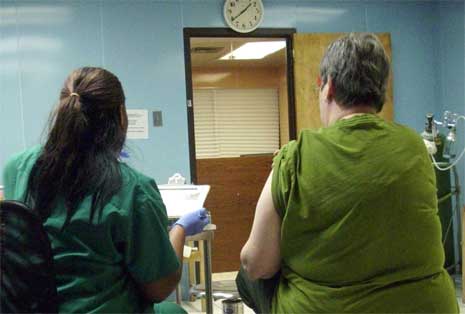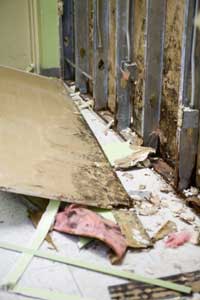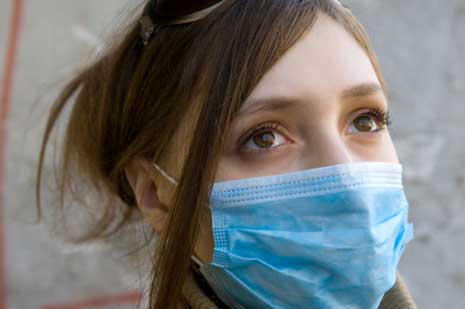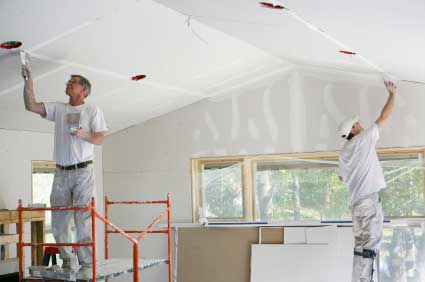 The study described was initiated by the Israel Ministry of Health as an effort to respond to and deal with public concern about possible health disorders related to odorous emissions (composed of a great many of organic and inorganic chemicals) from the regional industrial park (IP) in the Negev, southern Israel. Previous ecological studies found that adverse health effects in the Negev Bedouin population were associated with residential proximity to the IP. The objective of the current study was to investigate a hypothesis concerning the link between the IP proximity and life prevalence (LP) of upper respiratory tract chronic diseases (URTCD) and asthma in children aged 0-14 years living in rural Negev, Israel, in small agricultural communities.
The study described was initiated by the Israel Ministry of Health as an effort to respond to and deal with public concern about possible health disorders related to odorous emissions (composed of a great many of organic and inorganic chemicals) from the regional industrial park (IP) in the Negev, southern Israel. Previous ecological studies found that adverse health effects in the Negev Bedouin population were associated with residential proximity to the IP. The objective of the current study was to investigate a hypothesis concerning the link between the IP proximity and life prevalence (LP) of upper respiratory tract chronic diseases (URTCD) and asthma in children aged 0-14 years living in rural Negev, Israel, in small agricultural communities.
The cross-sectional study was conducted in 7 localities simultaneously during 2002. The following indirect exposure indicators were used: (1) distance (less than 20 km/ more than 20 km) from the IP (‘distance’); (2) presence (yes/no) of the dominant wind direction being from the IP toward a child’s locality (‘wind direction’); and (3) the child’s mother having made odour complaints (yes/no) related to the IP (‘odour complaints’). A 20 km cut-off point was used for ‘distance’ dichotomization as derived from the maximum range of ‘odour complaints’. This gave 3 proximal and 4 distant localities, and division of these by the ‘wind direction’ gave one versus two localities. The study population consisted of 550 children born in the localities. Medical diagnoses were collected from local clinic records. The following were included in the interviewer-administered questionnaire for a child’s parents: (1) demography (the child’s birth date, gender, mother being married or not, parental origin and education, number of siblings); (2) the child’s birth history (pregnancy and delivery) and breast-feeding duration; (3) the child’s parental respiratory health; and (4) environmental factors (parental smoking and occupational hazardous exposure, domestic use of pesticides, domestic animals, outdoor odour related to the IP emissions). For statistical analysis, Pearson’s chi(2), t-tests and multivariate logistic regressions were used, as well as adjusted odds ratios (OR) within a 95% confidence interval.
The multivariate analysis showed that increased LP of URTCD in children of proximal localities was statistically significant when associated with odour complaints (OR = 3.76 [1.16, 12.23]). In proximal localities, LP of URTCD was higher (at borderline level statistical insignificance p = 0.06) than in distant localities (OR = 2.31 [0.96, 5.55]). The following factors were found to be related to the excess of the LP of URTCD: (1) father’s lower education (by distance: OR = 2.62 [1.23, 5.57]; by wind direction: OR = 4.07 [1.65, 10.03]); (2) in-vitro fertilization (by distance: OR = 3.03 [1.17, 7.87]; by wind direction: OR = 4.34 [1.48, 12.72]). In proximal localities, the increase in asthma LP was associated with: (1) wind direction (OR = 1.95 [1.01, 3.76]); (2) a child’s male gender (OR = 2.95 [1.48, 5.87]); and (3) a child’s mother’s having had an acute infectious disease during pregnancy (OR = 4.84 [1.33, 17.63]).
An increased LP of chronic respiratory morbidity among children living in small agricultural localities in the Negev was found to be associated with indirect measurements of exposure (distance, wind direction and odour complaints) to IP emissions. These results, in conjunction with previously reported findings in the Negev Bedouin population, indicate a need for environmental protection measures, and monitoring of air pollution and the health of the rural population.
Reference: Karakis I, Kordysh E, Lahav T, Bolotin A, Glazer Y, Vardi H, Belmaker I, Sarov B., Life prevalence of upper respiratory tract diseases and asthma among children residing in rural area near a regional industrial park: cross-sectional study, School of Public Health, University of Haifa, Haifa, Israel. Rural Remote Health. 2009 Jul-Sep;9(3):1092





 The study described was initiated by the Israel Ministry of Health as an effort to respond to and deal with public concern about possible health disorders related to odorous emissions (composed of a great many of organic and inorganic chemicals) from the regional industrial park (IP) in the Negev, southern Israel. Previous ecological studies found that adverse health effects in the Negev Bedouin population were associated with residential proximity to the IP. The objective of the current study was to investigate a hypothesis concerning the link between the IP proximity and life prevalence (LP) of upper respiratory tract chronic diseases (URTCD) and asthma in children aged 0-14 years living in rural Negev, Israel, in small agricultural communities.
The study described was initiated by the Israel Ministry of Health as an effort to respond to and deal with public concern about possible health disorders related to odorous emissions (composed of a great many of organic and inorganic chemicals) from the regional industrial park (IP) in the Negev, southern Israel. Previous ecological studies found that adverse health effects in the Negev Bedouin population were associated with residential proximity to the IP. The objective of the current study was to investigate a hypothesis concerning the link between the IP proximity and life prevalence (LP) of upper respiratory tract chronic diseases (URTCD) and asthma in children aged 0-14 years living in rural Negev, Israel, in small agricultural communities.